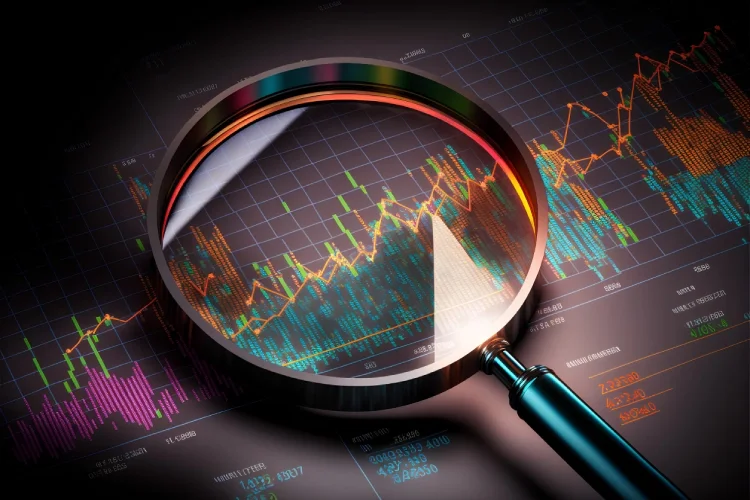The foreign exchange market is the largest, most liquid financial market in the world. Live Forex data is available online to everyone, and trading programs are readily available to anyone. The three largest security markets in the world are the New York Stock Exchange, the Nasdaq, and the Tokyo Stock Exchange which have a trading volume of over $300 billion daily. Combined, the foreign exchange market has a daily trading volume of around six point six trillion dollars per day, according to the Bank for International Settlements, which is the central bank for central banks. This daily figure is more than the annual GDP of all but two of the largest nations on earth, China and the USA.
Why the foreign exchange market is so influential
We live in an increasingly globalized world. Every day businesses are becoming increasingly reliant on global supply chains to guarantee that products and services are created and delivered in the best possible country. If you want something manufactured cheaply, produce it in China. If you want something built to the highest standard, build it in Germany. If you want the best seafood, import it from Japan.
This was not the way most countries thought 100 years ago. You either made something locally or it didn’t exist at all. Trade was extremely limited, and having something like a foreign automobile or imported food was considered an exceptional luxury but today this is the norm. It may be difficult for some people to find anything manufactured in their home country. This is due to the world’s acceptance of the concept of comparative advantage.
A Look at Germany and China Examples
Germany could easily create iPhones if you asked them to. They have the equipment and technological skills to make these gadgets with ease, but labor in Germany is extremely expensive and scarce. It also has very strict environmental restrictions about industrial waste, and it is not located near component suppliers for this sort of product. As a result, these German iPhones would be horrendously overpriced. According to educated estimations, it would cost roughly $4,000.
Similarly, if you want China to create a high-end luxury sports automobile, it can very likely do it. China has demonstrated that it has the industrial potential to develop and produce its automobiles, although they are quite mediocre. This is because China is better suited to mass-medium grade production, such as creating iPhones. It has a far bigger, unskilled workforce, less environmental laws, and is home to the factories that create the components that constitute the phones.
This implies that instead of Germany attempting to commit part of its resources and labor force to create tremendously costly phones for itself and China attempting to do the same to make some extremely bad automobiles, they may just agree to stick to what they do best. The automobiles will be manufactured in Germany, while the phones will be manufactured in China. This way, we’ll have a lot of cheap phones and a lot of high-quality vehicles, and we’ll be able to ensure that citizens in any nation can buy both cars and phones. Germany will exchange some of its vehicles for some of China’s phones, and everyone will benefit. Germany gets cheaper phones than it could create, and China gets better vehicles than it could produce. This is because each country has a comparative advantage in the product that they specialize in. The real deal
In reality, countries don’t bother. For example, 50 iPhone 11s for one Mercedes c63. They use their currencies but of course, Chinese iPhone manufacturers aren’t interested in being paid in euros and German car manufacturers aren’t interested in being paid in Chinese, so they trade their currencies. This creates a secondary market because suddenly you’re not only exchanging cars and phones but also euros and new brands.
The foreign exchange market has grown so large because global trade has grown to require it as well. The Bretton Woods Conference, held in July 1944 at the Mount Washington Hotel in Bretton Woods, Washington, established a gold standard for currencies. A total of 44 countries attended, with attendance limited to World War II Allies. The International Monetary Fund and the World Bank were founded at the summit. It outlined the principles of a fixed exchange rate system. The scheme set a gold price of $35 per ounce, with member countries pegging their currencies to the dollar. This meant that there was no true market for currencies; there was only a set rate for this currency at this price, regardless of supply and demand.
This all sounds very pleasant and straightforward, and it did work for a while, but battling supply and demand forces is like resisting the flow of water on a riverbank. Eventually, the constant forces will triumph.
Liberation of currencies
The first major crack in the system appeared in 1967, with a run on gold and an attack on the British Pound, resulting in a 14.3 percent devaluation of the currency despite the government’s conservative efforts to bring the currency back into line with its predetermined level. President Richard Nixon took the United States off the gold standard and directed Secretary Connolly to suspend temporarily the convertibility of the dollar into gold or other reserve assets.
By late 1973, the system had failed, and participant countries were free to freely float their currencies. This meant the currencies were traded on the open market just like shares. The growth of global trade and the liberation of currencies to live their best lives at whatever value the market decides for them is the reason why the market is so influential today.
Who actually conducts the trade
Most people are unlikely to have much exposure to the foreign currency market. Aside from trading currencies, someone may go on vacation or conduct some online shopping through a website. This does not automatically convert to your local currency. All of these retail transactions account for a negligible portion of the total foreign exchange market. Companies, investment firms, and governments are the true significant players, and they all wield equal power.
Businesses are the simplest to comprehend. If they wish to start a new store in a different nation, they will need to transfer money there and convert it into the local currency to pay for staff, supplies, and expenditures. This is all really straightforward and simple to grasp, but it does pose a problem. Say an American fast-food chain is doing amazing business in the States in the year 2017 and they decided to set up a new store in Australia. It sent over 50 million US dollars as an initial investment and transferred it into Australian dollars. Because of the conversion rate, they would have earned approximately 55 million Australian dollars at this time, just enough to pay for the construction of some more restaurants as well as the payment of workers and supplies until the business begins to produce a profit. Let’s say it does really well and five years later, in the year 2022, the franchise operation gets sold to an Australian investor for 75 million dollars. This would represent an American company but at the same time, the Australian dollar has tumbled in value to a point where seventy-five million dollars is only worth 50 million US dollars, which represents a true return on investment of 0 percent, which is pretty bad.
Foreign exchange has really posed a great risk to the business, which is something that everyone seeking to manage an international firm should be aware of Most firms are willing to take risks, but they prefer to do it in their area of expertise. A burger franchise would rather risk going out of business because a newer hipper more Instagram or Wahlburgers franchise opened up in the same market rather than going out of business. After all, the foreign exchange market did something funky, so they need a hero who is willing to take on the risk for them. This brings us to the investor.
Currency fluctuation
The foreign exchange market, sometimes known as the forex market, is popular among investors due to the high potential for returns it offers. This is accomplished through the use of financial instruments known as derivatives. These are essentially fictitious items whose value is derived from another asset. Investors will essentially bet with the company that if the value of the foreign currency rises relative to the currency in your home market, they will be paid. If the value of the foreign currency falls, he compensates you. This means that regardless of what happens to the Australian dollar in our earlier example, the corporation would make a consistent profit even if the Australian dollar fell in value.
If the Australian dollar rose during this period, the investor would have to pay the company around $25 million in US dollars to make up the difference in currency swings. It would imply that the fast-food company would have otherwise made, say, $100 million, but in this case, would have to pay the investor $25 million in both situations. The company earns a consistent 75 million dollars, representing the 25 million dollars in profit that it should have earned without having to worry about the ups and downs of the foreign exchange market, and the investor took a risk for the possibility of profit, which is ultimately what investing is all about. In short, speculative investors want to take on risk for the potential of profits and a normal international business wants to get rid of any foreign exchange risk even if it means that it might otherwise miss out on some speculative profits.

 Do You Make These 7 Financial Mistakes
Do You Make These 7 Financial Mistakes